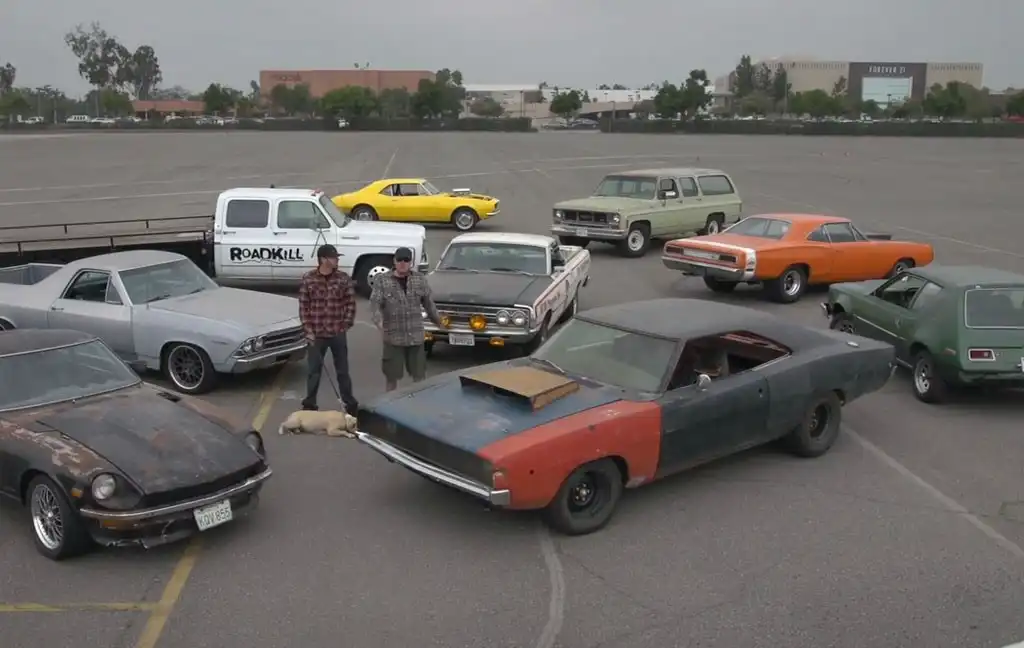Finding the right car to restore can be both an exciting and overwhelming experience. Whether you’re a first-time restorer or a seasoned pro, selecting the right project car is crucial for a successful restoration. After all, you want a vehicle that not only has the potential for a beautiful transformation but is also a worthwhile investment of your time, energy, and resources. In this blog, we’ll explore key tips for spotting a great restoration project car, so you can make the best choice and enjoy the process from start to finish.
1. Start with the Right Make and Model
The first step in choosing a great restoration project car is deciding what kind of car you want to work on. Classic car enthusiasts often focus on specific makes and models because they are more familiar with their parts, features, and potential issues. However, choosing the right make and model is crucial to ensuring that your project is both enjoyable and worthwhile.
-
Popular Models with Good Parts Availability: Opt for cars that have a strong following in the restoration community. Popular models often have a greater supply of parts, making your restoration easier and more affordable. For example, classic American muscle cars like the Chevrolet Camaro, Ford Mustang, and Dodge Charger are not only iconic but also have a wealth of aftermarket parts and resources.
-
Consider Value: Some cars, like the Ford Bronco, Toyota Land Cruiser, or Porsche 911, are in high demand in the restoration market and often hold or appreciate in value once restored. It’s important to research the potential value of your chosen car after restoration to ensure that your project is a good investment.
Why it matters: Choosing a car with high demand and good parts availability ensures you have a smoother restoration process, access to resources, and the potential for a valuable finished product.
2. Check the Condition of the Body and Frame
The body and frame are the foundation of any restoration project, so it’s essential to examine them thoroughly before committing to a car. The body and frame condition will play a huge role in how much work your project will require.
-
Rust: Rust is one of the most common issues that restorers encounter. Check the car for rust on the body, undercarriage, and particularly on the frame. A small amount of surface rust might be manageable, but extensive rust in structural areas such as the frame, rocker panels, or floorboards can be a dealbreaker. Rust repairs can be expensive and time-consuming, so you need to consider how much you’re willing to invest.
-
Frame Integrity: The frame is the car’s skeleton, and any structural damage can compromise the safety and overall success of the restoration. Ensure that the frame is straight and not bent or cracked. Frame repairs are costly and complicated, so avoid cars with frame issues unless you’re prepared for a major project.
-
Body Panels: Look for cars with straight, relatively undamaged body panels. Dents, scrapes, or rust spots are normal, but you should avoid cars with severe body damage unless you’re ready to invest in bodywork.
Why it matters: A solid body and frame will reduce the amount of time and money you spend on repairs, ensuring a smoother and more cost-effective restoration.
3. Inspect the Engine and Mechanical Components
When restoring a car, the engine and other mechanical components are often the most expensive and challenging areas to address. Checking the engine condition early on will help you gauge the level of restoration required and give you a realistic idea of what’s involved.
-
Engine Condition: The engine is the heart of any car, and if it’s in poor condition, it may require a full rebuild, which can be time-consuming and expensive. Check for signs of oil leaks, corrosion, or missing parts. If the engine is locked or non-functional, it could mean an expensive rebuild is required.
-
Transmission and Drivetrain: Pay attention to the transmission and drivetrain as well. Check for any signs of leaks, grinding noises, or poor shifting performance. A failing transmission can be costly to replace, so ensure the transmission is in good working order.
-
Suspension and Brakes: Don’t overlook the suspension system and brakes, as these parts are crucial for the vehicle’s performance and safety. Check for signs of damage or wear in the suspension components, such as broken springs, worn-out shocks, or leaky struts. Likewise, ensure the brake system is intact, with no rust or damage to the lines or calipers.
Why it matters: An engine or drivetrain that needs heavy repairs can add significant costs and time to the project. A car with a solid engine and mechanical system will allow for a smoother, more affordable restoration.
4. Consider the Interior Condition
While the body and mechanical components of the car are the most important, the interior can also give you a good idea of how much work the project will require. Restoring the interior of a vintage car can be both rewarding and costly, so understanding the condition of the upholstery, dashboard, and other interior parts is essential.
-
Seats and Upholstery: Examine the condition of the seats and upholstery. Reupholstering seats can be expensive, so if the fabric or leather is in poor condition, make sure you’re comfortable with the cost of restoration. Sometimes, replacing the entire interior may be more cost-effective than restoring it.
-
Dashboard and Gauges: The dashboard and gauges can be tricky to repair or replace, especially if they’re outdated or damaged. Look for cracks in the dashboard and test the functionality of the gauges. If the car has an original radio or unique features, keep in mind that these may be valuable if restored properly.
-
Trim and Fittings: Check the trim pieces, window seals, and other fittings. If they’re broken, faded, or missing, you’ll need to either replace or restore them. These smaller components can add up, so make sure you factor these costs into your project.
Why it matters: Restoring the interior of a classic car is often a major part of the project. Knowing what you’re getting into upfront can help you budget accordingly and avoid unexpected expenses.
5. Do Your Research on Parts Availability
Before committing to a restoration project, it’s vital to research whether parts for the specific make and model you’re considering are readily available. Some vintage cars have limited parts availability, making the restoration process more challenging.
-
Aftermarket Parts: Many classic cars have a large aftermarket parts market, making it easier to find replacement parts for your restoration. Cars with strong communities, such as Mustangs or Camaros, tend to have a wealth of aftermarket parts available.
-
OEM Parts: For some cars, you may need to search for original equipment manufacturer (OEM) parts, which can be more difficult and expensive to find. It’s essential to consider the rarity of your project car when determining whether it’s a feasible long-term investment.
-
Reproduction Parts: For extremely rare cars, reproduction parts may be your best option. While reproduction parts can be high-quality, they are sometimes more expensive or less authentic than original parts.
Why it matters: Ensuring that the car you choose has access to readily available parts can significantly reduce restoration time and cost, preventing frustration down the road.
6. Consider Your Budget and Time Commitment
Restoring a classic car is a significant investment of both time and money. Even if you find a great project car, it’s essential to realistically assess your budget and how much time you can commit to the restoration process.
-
Budgeting for Restoration: Restoration projects can range from a few thousand dollars to tens of thousands, depending on the condition of the car and the parts needed. Create a detailed budget that includes the cost of parts, labor, tools, and any unforeseen expenses.
-
Time Commitment: Restoration projects can take months or even years to complete, depending on the extent of the work. Make sure you’re prepared for the time commitment and willing to invest the effort required.
Why it matters: A realistic budget and timeline will help ensure that you can complete your restoration project successfully without financial or emotional stress.
Conclusion
Spotting a great restoration project car requires a blend of research, patience, and knowledge. By carefully evaluating the car’s body, engine, mechanical components, interior, and parts availability, you can make an informed decision and ensure that your restoration project is successful and rewarding. Remember to stay realistic about your budget and time commitment, and choose a project that aligns with your skills and passion for vintage cars. Happy restoring!

